I’ll never forget my first Swiss fast food experience. It wasn’t at a fancy restaurant or a big-name chain. It was at a small food stall in Zurich’s central train station.
I found myself rushing to catch a train, hungry, and unsure about what to grab. Then I found a stall selling Rösti topped with melted cheese. One bite, and I was hooked. The crispy potatoes and the melted cheese it was a modest thing but strangely joyful.
It hit me at that moment: Swiss fast food is different. It’s not all burgers and fries (though you’ll find those, too). It’s about quality ingredients, local flavors, and a variety of traditional Swiss dishes transformed into fast, grab-and-go meals.
In this guide, I’ll show you the best fast food you can find in Switzerland, the one that locals love, the one you have to try. Whether you’re a tourist seeking something fast or a local hoping to branch out into more Swiss flavors, I can help.
From crispy Rösti to cheesy Käsekreiner, from buttery Bretzels to flavorful Swiss döner kebabs, I will tell you everything you need to know about where to find these treats and my tips on how to eat like a Swiss when enjoying them.
 Rösti – The Swiss Hash Brown Upgrade
Rösti – The Swiss Hash Brown Upgrade
I’ll never forget the first time I tried authentic Rösti in Switzerland. It was not at a sit-down restaurant but at a small roadside food stand near Lake Zurich. I had just completed a long morning hike, and the scent of crispy potatoes cooking on a griddle drew me in. When I finally had a bite, I understood the hype surrounding Rösti, a national treasure. It was crispy and buttery, and a medley of unreadable balance between golden crunch and soft, toothsome potato fat.
But here’s the trick: Rösti is not just another extra potato dish. It’s a staple of Swiss cuisine, eaten by locals for centuries, and now a dietary staple of fast food in various regions of Switzerland.
What is Rösti?
Rösti is essentially Switzerland’s version of hash browns, only much better. With grated potatoes fried to golden brown and offerings of cheese, bacon, or eggs, it originated as a farmers’ breakfast in the canton of Bern. It later became a street food trend, found in food stalls, train stations, and yes, even as a snack in Swiss locations of McDonald’s!
Though cooks traditionally fried Rösti in butter in a pan, today’s fast-food-style versions use huge griddles to crisp them up in minutes and cook them to dreamy perfection.
Why Rösti is the Perfect Swiss Fast Food
Unlike oily fast-food fries, Rösti is made from premium Swiss potatoes, often with little extra fat. It’s:
Quick & Nibble – Sliced, as Rösti sticks, or Rösti burgers.
Customizable – It can be served plain or topped with cheese, meats, or sauces.
Filling & Satisfying – It’s substantial enough to be a full meal.
I love one variation in particular, called Rösti mit Speck und Käse—a crispy Rösti topped with bacon and gooey-salty Swiss cheese melted on top. On a crisp Swiss afternoon, it is perfection!
How to Eat Rösti Like a Local
You don’t have to sit in a fancy restaurant to taste Rösti – you can find great Rösti in fast food joints across Switzerland. Here are a few of the better places to grab a Rösti:
Train Stations & Street Food Stalls – Many large train stations, including Zurich HB and Bern, have food kiosks serving Rösti to-go. Ideal for a snack before hopping on a train.
Ski Resorts & Mountain Huts – If you’re skiing at places like Zermatt or St. Moritz, Rösti is a convenient grab-and-go snack that will keep you warm on the slopes.
Fast Food Chains & Takeaways – Did you know that even McDonald’s Switzerland has a Rösti burger, which consists of a crispy Rösti patty inside a burger bun? It’s surprisingly good!
Supermarkets (Pre-Made Rösti) – If you’re looking for a quick Rösti meal at home, Migros and Coop sell Rösti ready to cook in vacuum packs. Simply heat it, and restaurant-quality Rösti is yours in minutes.
How to Eat Rösti Like a Local
For the full Swiss experience, here are a few insider tips:
Zürich-style Geschnetzeltes – A secretary-sized veal dish with a lot of sauce, typically eaten with Rösti.
With Raclette Cheese – Crispy Rösti drizzled with melted Swiss cheese is next-level good.
Spice it Up! Some places serve Rösti with paprika, garlic sauce, or even truffle toppings.
 Zürcher Hot Dog – The Swiss Sausage King
Zürcher Hot Dog – The Swiss Sausage King
The very first Zürcher Hot Dog I ever tasted has stayed with me. It was late in the evening, and I was wandering through Zurich’s busy Bahnhofstrasse in search of a quick meal. I wasn’t up for a meal, but I wanted something warm and hearty. That was when I noticed a small food stand that sells Swiss-style hot dogs. But this was no ordinary American version, nor German one; instead, it arrived in a hot-from-the-oven bürli roll stuffed with a juicy Swiss wurst. One bite in, I was sold — the sausage was grilled to perfection, smoky and flavorful, and the bread had a perfect crusty exterior and soft inside.
That was when I understood why Zürcher Hot Dogs are special. They’re basic but good, like most fast food in Switzerland. If you’re in Switzerland for a quick, delicious bite, this is one street food treat not to miss!
What is a Zürcher Hot Dog?
While regular hot dogs are served in processed and soft buns, the Zürcher Hot Dog uses a crusty, fresh Bürli roll, which is a small Swiss bread roll with a crispy surface and a fluffy inside. The sausage usually is:
Bratwurst – A Swiss classic, with mild spices and juicy.
Cervelat – Also the national sausage of Switzerland, it is increasingly smoky and firmer.
The sausages are cooked over an open flame until they get a perfect charred crust, then they’re set into the warm bread with just a smear of mustard, ketchup, or mayonnaise.
What’s different about it from other hot dogs?
The meat is better– The Swiss sausage is prepared just with high-quality beef and pork, and nothing else.
Crusty Swiss Bread – A fresh-baked roll from the bakery instead of a plain hot dog bun.
The Perfect Minimal Toppings – Just the right amount of flavoursome toppings, nothing excessive.
Why the Zürcher Hot Dog is a Must-Try Fast Food
It’s a Quick & Filling – Go get it, but feast on it.
Charred perfection – Unlike boiled dogs, Zürcher hot dogs have a delicious charred flavor.
🇨🇭 It’s a Local Classic go-to for Zurich locals, whether for a lunch break or a late-night snack.
The best way to enjoy it? Get one fresh off the grill and devour it immediately while it’s still hot and crispy inside!
Where to Find the Best Zürcher Hot Dogs in Switzerland
You don’t need to visit a fancy restaurant to try some of the best Zürcher Hot Dogs, which can be found at:
Food Stands – Especially near Zurich HB (Main train station) and other hot spots like Paradeplatz.
Gas Stations & Convenience Stores – Most gas stations offer hot, freshly made Zürcher Hot Dogs as a convenient roadside snack.
Markets & Festivals – These iconic hot dogs are often sold at Swiss street food markets and events.
Personal Tips for the Ultimate Zürcher Hot Dog Experience
Swiss Pretzel – Because you must eat a hot dog with a soft pretzel!
Swiss Cheese It – Some locations serve hot dogs filled with Gruyère cheese for a decadent twist.
Go spicy – If you prefer heat, request extra mustard or a spicy Swiss sauce for an additional kick.
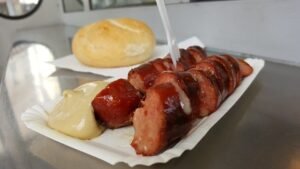 Käsekreiner – The Cheese-Stuffed Sausage
Käsekreiner – The Cheese-Stuffed Sausage
I’ll never forget the first time I had Käsekreiner. It was a crisp autumn night in Bern, and I had just visited the city’s lovely old town. Starving, in need of something warm, I spotted a small food stall close to the train station. The vendor was grilling sausages, and the smoky meat smell was intoxicating. I asked for a recommendation, and he smiled and handed me a Käsekreiner, a juicy sausage filled with cheese, served in a crusty Swiss roll.
The first bite was a little bit of magic. The casing had the right snap, and when I bit into one of them, melted cheese gushed out, combining with the smoky, lightly spicy flavor of the sausage. It was peasant food at its finest, sultanyag, savory, and heavily seasoned.
That night, I understood why Käsekreiner is one of Switzerland’s greatest fast foods. This is a sausage like no other: it’s an experience.
What is Käsekreiner?
Käsekreiner is a pork and beef sausage containing Swiss cheese, typically Emmental or Raclette cheese. As the sausage cooks, the cheese melts inside, so that when you take a bite, you get a burst of warm, creamy cheese mingled with the smoky, perfectly seasoned meat.
Unlike most sausages, a Käsekreiner is:
Stuffed with cheese – Making it even richer and more indulgent
Flame-grilled – This seasoning consists of crushed red pepper, giving it a crunchy, slightly burnt skin.
Read it with mustard or spicy sauce served on the side to counter the richness of the cheese.
It is a favorite among locals, tourists, and late-night snackers!
Why Käsekreiner is the Ultimate Swiss Fast Food
Ideal Grab-and-Go Snack – Easy, satisfying, and tasty.
Grilled for Extra Flavor – That smoky, crisp bite makes all the difference.
Cheesy, Savory Goodness – You have the best of both worlds – juicy meat + gooey cheese.
Popular Across Europe but Unique in Switzerland – Käsekreiner can be found in Austria, but the Swiss kind tends to be filled with quality local cheese, which makes it even better.
Where to Find the Best Käsekreiner in Switzerland
The good news is that Käsekreiner is readily available, especially if you’re in a large city or taking transit by rail. Here’s where to get it:
Street Food Stalls & Markets – Käsekreiner are sold fresh from street vendors all over Zurich, Bern , and Basel. The ones with a long line tend to have locals, of course; they know what’s best!
Train Stations & Gas Stations – Like most of Switzerland’s fast foods, Käsekreiner can be found at food stands in train stations and gas station shops.
Swiss Festivals & Events – If you’re visiting Switzerland during one of its festivals (such as Züri Fäscht or Basel Herbstmesse), look for food stalls where Käsekreiner are made on a grill right in front of you.
Supermärkte (für’s Kochen zu Hause) – bei Migros und Coop gibt es vorgegarte Käsekreiner, die man sich zu Hause heiß machen kann. Simply grill until crispy, and you’re set!
How to Eat Käsekreiner Like a Local
If you want to enjoy the full Käsekreiner experience, do as the locals do:
Best eaten in a Bürli roll – a crusty Swiss bread roll that balances out the richness of the sausage nicely.
Serve it with Spicy Mustard – the tang cuts the creamy cheese filling.
Enjoy it with a Joint – The malty tastes of a chilly Swiss lager slice through the richness of the sausage.
Get Extra Cheesy – Some vendors slather Käsekreiner with melted Raclette cheese for an über-indulgent treat.
 Swiss Döner Kebab – A Local Twist on a Classic
Swiss Döner Kebab – A Local Twist on a Classic
My first Swiss Döner Kebab is still fresh in my memory. It was late in Geneva, after a long day of exploring the city. Hungry and exhausted, I had found a small Döner shop near the train station, one of those places that is open when everything else is closed.
I had eaten Döner Kebabs previously in Germany and Turkey, but the Swiss variety? It was something else. The meat (so expertly grilled and thinly sliced that it took on something between the texture of tender, pulled pork and the crisp sensation of roasting chicken skin) was stuffed into the biggest freshly baked flatbreads, with crunchy Swiss-grown veggies and a secret garlic-yogurt sauce. This wasn’t your ordinary Döner; I knew it in one bite.
In Switzerland, Döner Kebab is not mere fast food, it is one of the most popular street foods in the country, loved by locals and tourists alike.
What Makes Swiss Döner Kebab Special?
Döner Kebab might have been born in Turkey and has many fans in Germany, but Switzerland has added its touch to this classic dish.
Here’s how it differs:
Premium Swiss Meat Quality – Most Swiss Döner shops feature locally sourced beef, lamb, or chicken, which improves both flavor and quality.
Fresher, Crispier Bread – Swiss Döner is served in a freshly baked Turkish-style bread rather than the mass-produced pita, increasing its flavor.
Swiss Cheese Option – Some Döner places even add Swiss cheese for a delightful melty surprise!
Lighter, Less Greasy Sauces – Swiss Döner shops use yogurt-based garlic or herb sauces which are lighter than those used in the German or Turkish kebabs.
The result? A juicy, fresh, well-balanced Döner Kebab, not too greasy, not too heavy, pure delicious.
Why Döner Kebab is a Swiss Fast-Food Favorite
It’s Cheap & Hearty Döner Kebab, which is probably one of the cheapest and most filling meals in Switzerland.
It’s Freshly Made. Unlike most fast foods, Döner is cooked on-site, with the meat cut right off the spinning spit.
Döner kebab is popular among Swiss people and tourists and a must-try when in the region.
If you grab one after a night out (or any other time of day), it’s always reliable. It gets the job done during a busy lunch break or as a quick meal while visiting Switzerland.
Where to Find the Best Swiss Döner Kebab
Döner Kebab shops are found everywhere in Switzerland, but here are some of the best places to get a quality one:
Big Cities (Zurich, Geneva, Basel, Bern) – You will find dozens of Döner in these major cities, some 24/7
Train Stations & Late-Night Spots – If you’re traveling, the Döner stalls in train stations make for a quick and dependable meal on the go.
Local Kebab Shops & Turkish Restaurants – It is no secret: Family-run Döner shops with traditional recipes and the best ingredients.
Pro Tip: Check for long queues outside, which means the Döner is fresh and popular with locals!
How to Eat Döner Kebab Like a Local
So you want to experience the true Swiss Döner experience? Here’s how to do it:
Extra Grilled Meat – Some shops will grill your meat longer than the standard time, which gives the meat a crispy, smoky flavor.
Try the Garlic Yogurt Sauce – It’s lighter and fresher than the heavy mayonnaise-based sauces.
Add a Spicy Kick – If you like heat, you can ask for something called spicy sauce, which is often made with harissa or chili.
Upgrade to a Döner Box – If you prefer without the bread, just ask for a Döner Box, a combination of your meat, salad, fries, and sauce.
Malakoff – The Hidden Gem of Swiss Fast Food
I had yet to come across a Malakoff until the first time I ever laid eyes on one. I was in the countryside of Vaud, a region in western Switzerland, best known for its cheese, vineyards , and sleepy little villages. A friend who lived in the area insisted that I have a bite of this decadent deep-fried cheese ball, and I have to admit—I was skeptical at first. Like, how special could fried cheese be, you know?
But when I took my first bite, I knew. Crispy on the outside, warm and gooey on the inside, Malakoff was like no fast food I’d ever eaten. The flavorful, buttery richness of Swiss Gruyère cheese combined with the crunch of theé golden-brown crust was sublime. It was love at first bite.
If you’ve never heard of Malakoff until now, you’re not alone! It’s one of Switzerland’s best street-food-kept secrets, and is mostly found in the French-speaking part of the country. But trust me, once you’ve experienced it, you’ll never forget.
What is Malakoff?
Malakoff is a deep-fried cheese beignet, made traditionally with Gruyère or Emmental cheese folded into a light batter and then fried until golden brown. It is crispy on the outside, melty on the inside, and bursting with rich, cheesy flavor.
Each with its own balls, some made with cheese sticks, some round. Either way, Malakoff is a cheese lover’s dream!
Why is it called Malakoff?
The name “Malakoff” derives from the Crimean War (1853–1856). After the war, Swiss mercenaries brought back the concept of frying cheese as a snack. The idea quickly took root in Switzerland and has since become a specialty, especially in the canton of Vaud.
Why Malakoff Is the Best Swiss Fast Food
Cheese Lover’s Dream –It’s essentially deep-fried Swiss cheese. Enough said.
Ideal Grab-and-Go Snack –It can be eaten with your hands, no fork or spoon required.
Crispy Outside, Gooey Inside – The contrast is what makes every bite satisfying.
🇨🇭 A Real Hidden Gem in Switzerland – The tourists never know, the locals love.
While most people immediately think of fondue and raclette when it comes to Swiss cheese dishes, Malakoff offers a lesser-known (but equally delicious) alternative.
Where to Find the Best Malakoff in Switzerland
Since Malakoff is primarily popular in the French-speaking part of Switzerland, here’s where you can find it:
Street Food Markets & Festivals – In particular, in Lausanne, Vevey, and Montreux. Find food stalls offering piping hot Malakoff.
Train Stations & Takeaway Shops – Malakoff is available as a snack option in some train stations in Geneva & Lausanne.
Traditional Swiss Buvettes (Snack bars) – Often found in small food stands in western Switzerland.
Cheese Specialty Shops & Bakeries – A few bakeries also sell pre-made Malakoff that you can simply heat up at home.
How to Eat Malakoff Like a Local
To get the most out of Malakoff, here are some tips from locals:
Serve with Bread & Pickles – Many Swiss people will eat Malakoff with some crusty bread and tart pickles to cut the richness.
Pair with Swiss White Wine – It pairs perfectly with Malakoff, a glass of Chasselas wine from Vaud.
Pair with Mustard or Spicy Sauce – Some places will serve Malakoff with a light mustard sauce, which adds extra flavor.
Add a Salad on the Side – If you’re having Malakoff as a meal, a small green salad helps cut through the richness.
Bretzel – Switzerland’s Ultimate Soft Pretzel
I still remember my first fresh Swiss Brotzel. It was a cold winter morning in Lucerne, and I’d just exited the train station, searching for something warm and hearty.
I noticed a small bakery stall selling golden-brown pretzels, their glossy surfaces covered in coarse salt. As soon as I ripped off a piece, I knew I had discovered something special.
The outside was chewy and encased in a wonderful crust, the inside soft, fluffy, and laced with the taste of butter just as I remember. Together with a cup of fresh coffee, it made for the perfect Swiss breakfast on the run.
That’s when I understood why the Bretzel is a favorite among Swiss fast food, they’re uncomplicated, delicious and good any hour of the day.
If you’re on the way to your job, walking around the city, or just need a quick bite, a freshly baked Bretzel won’t let you down.
What is a Bretzel?
A Bretzel (or Brezel) is the Swiss equivalent of a classic soft pretzel. It has a unique knot shape, a deep golden-brown crust, and a soft, a bit chewy inside. Unlike the often sweet American-style versions, Swiss Pretzels stay faithful to tradition, finding the sweet spot between saltiness and butteriness.
So why are Swiss Bretzels special?
Golden outside, soft inside – A delightful contrast in texture.
Swiss flour, butter, and just enough salt.
Versatile & Filling – These can be eaten straight or with toppings such as cheese, butter, or ham.
Bretzels are among the most popular grab-and-go snacks in Switzerland, frequently spotted on the menu of bakeries, food stalls and train stations.
Why Bretzels Are the Perfect Swiss Fast Food
Light But Filling – This is a filling snack that doesn’t feel dense.
Quick & Accessible – Findable for the most part in bakeries or supermarkets.
Pairs Well with Other Foods – Served with cheese, cold cuts, or even Nutella.
🇨🇭 Swiss Classic – Though Bretzels are ubiquitous in Germany and Austria, their Swiss cousins are softer and customarily served with local cheeses or butter.
One of my favorite versions is the Butter Bretzel (Butterbrezel), a Bretzel sliced in half and slathered with a thick layer of creamy Swiss butter. It’s straightforward but mind-blowingly good.
Where to Find the Best Bretzels in Switzerland
Fortunately, there are plenty of good Bretzels in Switzerland. A few of the top places are:
Bakery Chains (e.g., Brezelkönig) – One of the Best selling brands and have been eaten and loved by thousands of people.
Train Stations & Kiosks – Large Swiss train stations (Zurich HB, Bern, Geneva) have stalls where you can buy hot, fresh Bretzels.
Local Bakeries (Bäckerei) – Swiss bakeries create some of the best handcrafted Bretzels, usually with traditional recipes and local products.
Supermarkets (Migros & Coop) – If you are looking for a quick and affordable Bretzel, just pass by the bakery section in Migros or Coop and pick one up.
For the top taste, I at all times suggest grabbing a freshly baked Bretzel from a bakery! You actually can’t beat the style and consistency!
How to Eat a Bretzel Like a Local
Locally, here are some tips for enjoying a Bretzel the Swiss way:
Have a Butterbrezel – A Bretzel stuffed with Swiss butter.
Serve No More Than Swiss Cheese – A Brie is best served with Gruyère or Emmental cheese.
Make it a Meal – Some vendors sell Brezels with ham, salami, or even smoked salmon for a heartier snack.
Devour it with Coffee – A Bretzel and a cup of Swiss coffee? A perfect breakfast!
Swiss Sandwiches – The Gourmet Fast Food
If you think sandwiches are a simple, everyday meal, prepare to be changed by Switzerland. I thought a sandwich was just bread, a slice of cheese, and a piece of ham until I had my first Swiss sandwich at a little bakery in Lucerne.
It was made with freshly baked Zopf bread, creamy Appenzeller cheese, thinly sliced Bündnerfleisch (air-dried beef), and a smear of butter.
Every bite was a well-rounded combination of flavors! The nutty richness of the cheese, the salty depth of the cured meat, and the soft, somewhat sweet bread.
Then, I had an epiphany! Swiss sandwiches weren’t just quick snacks; they were gourmet fast food. Whether as a simple yet high-quality offering from a local bakery or as a hearty grab-and-go meal from a train station kiosk, Switzerland takes its sandwiches seriously.
What Makes Swiss Sandwiches Special?
Fast-food chains focus on mass-producing sandwiches, but Swiss sandwiches highlight quality. Here’s why they stand out:
Swiss sandwiches include artisan breads and artisan cheeses and are topped with premium and locally sourced meat.
Simply but Flavorsome – No overbearing sauces or synthetic fixings, just unadulterated, flavorful home cooking.
Well Balanced – Crunchy, chewy, salty, and creamy in every mouthful.
Fast & Convenient – Commonly found everywhere from bakeries to train stations, making them some of the best fast-food joints in Switzerland.
Popular Types of Swiss Sandwiches
Bürli Sandwich – A sandwich made out of a rustic Swiss Bürli roll, usually filled with cheese, ham, or salami. Crisp outside and tender inside.
Raclette Sandwich – A hot sandwich made of melted Raclette cheese, scraped onto bread, served with pickles, onions and cured meats. Pure indulgence!
Bündnerfleisch Sandwich – Air-dried Swiss beef, Bündnerfleisch, layered with butter and mountain cheese on crusty bread.
Corsignal – A soft, mildly sweet sandwich using Zopf bread filled with creamy cheese and vegetables.
Vegetarian Sandwiches – Freshly sliced Swiss cheese, tomatoes, cucumbers, and herb butter on warm whole-grain bread.
Where to Find the Best Swiss Sandwiches
Bakery & Café – Confiserie Sprüngli (Zurich), Bäckerei Hug (Lucerne), and Bäckerei Reinhard (Bern) are famous for their sandwiches.
Train Station Kiosks & Supermarkets – Migros, Coop, and Brezelkönig offer delicious pre-made sandwiches to take away for a very basic meal.
Pamper with Street Food Markets & Festivals – Lots of roasted Raclette bread sandwiches and fresh gourmet sandwiches in a stall around the food courtyard in Swiss Cities.
How to Enjoy Swiss Sandwiches Like a Local
Choose quality over quantity – Swiss sandwiches focus on essential, high-quality ingredients, not unnecessary fillers. The simpler, the better.
Pair With Local Cheese – Cheese lovers should look to a sandwich filled with Gruyère, Appenzeller or Tête de Moine.
Swiss Drink – Order a sandwich with Rivella (Swiss soda) or a hot cup of Swiss coffee.
Grab One for the Train Ride – Many locals pick up a fresh sandwich to take on a train for a quick, easy snack during the ride.
Final Thoughts (Summary)
If there’s one thing I’ve learned in my foray into the world of Swiss fast food, it’s that Switzerland does fast meals differently. Gone are the greasy, mass-produced options, and instead, high-quality, locally sourced ingredients prepared so expertly that fast food seems upscale.
With the crispy, golden Rösti, Käsekreiner’s cheesy goodness, the delicious smokiness of a Zürcher Hot Dog and the flavors of a Bündnerfleisch sandwich full of history and tradition, every fast food can tell a story like no other.
Whether you’re snatching a snack from a street vendor, a fresh sandwich from a bakery, or a hot meal from a train station, you’re in for a delicious experience.
So, if you’re visiting Switzerland or even if you live here in search to discover another local flavor, make sure to taste these best Swiss fast food. Forget the worldwide chains: Get a taste of Switzerland, the real, authentic, delicious way on the run!
What’s Next? Your Swiss Food Adventure Starts Now!
Which of these Swiss fast foods have you sampled? Let us know your favorite in the comments!
Going on a trip to Switzerland? So bookmark this guide and use it to search for the tastiest Swiss fast foods!
Want more insider food tips? Stay tuned for my upcoming Swiss food guide!
Hungry yet? Now get out there and experience Switzerland one tasty bite at a time!
FAQs About Swiss Fast Food
In Switzerland, what’s the national fast food?
In Switzerland, some of the most popular fast food items are Rösti, Zürcher Hot Dog, and Swiss sandwiches.
Where can I get the best Swiss Food?
You’ll typically find Swiss fast food in train stations, bakeries, street food stalls, and supermarket fast-food shops like Migros and Coop.
Is Swiss fast food expensive?
Swiss fast food does cost more than your average cheeseburger joint, but that is generally because they use finer quality ingredients and fresh preparation.
What is the best Swiss fast food for vegetarians?
Some good vegetarian-friendly options are rösti, cheese-filled sandwiches, and melted Raclette sandwiches.
Is Swiss fast food available in the late hours?
Yes! Many train station kiosks, gas stations, and 24-hour bakeries sell Swiss fast food late into the night



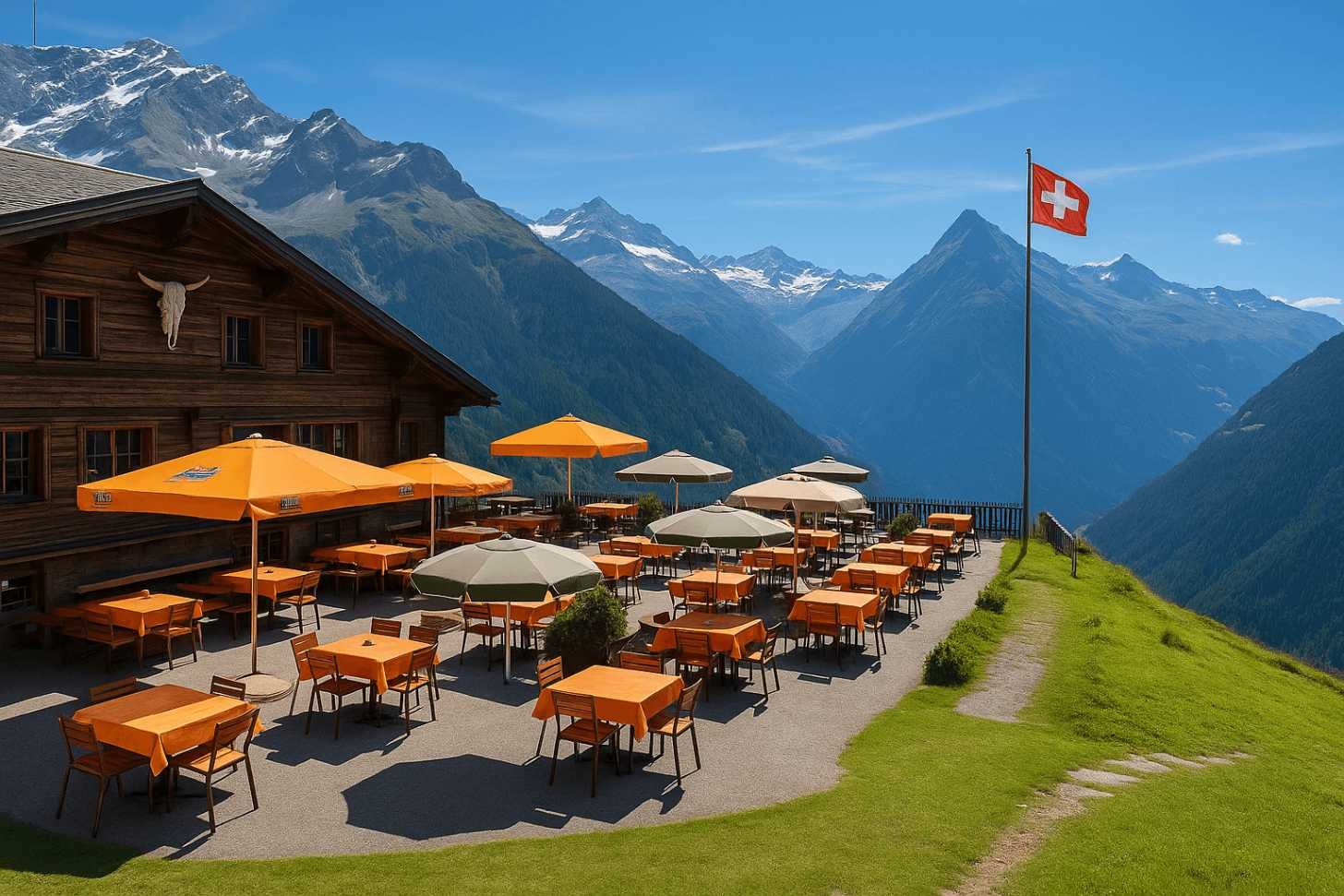

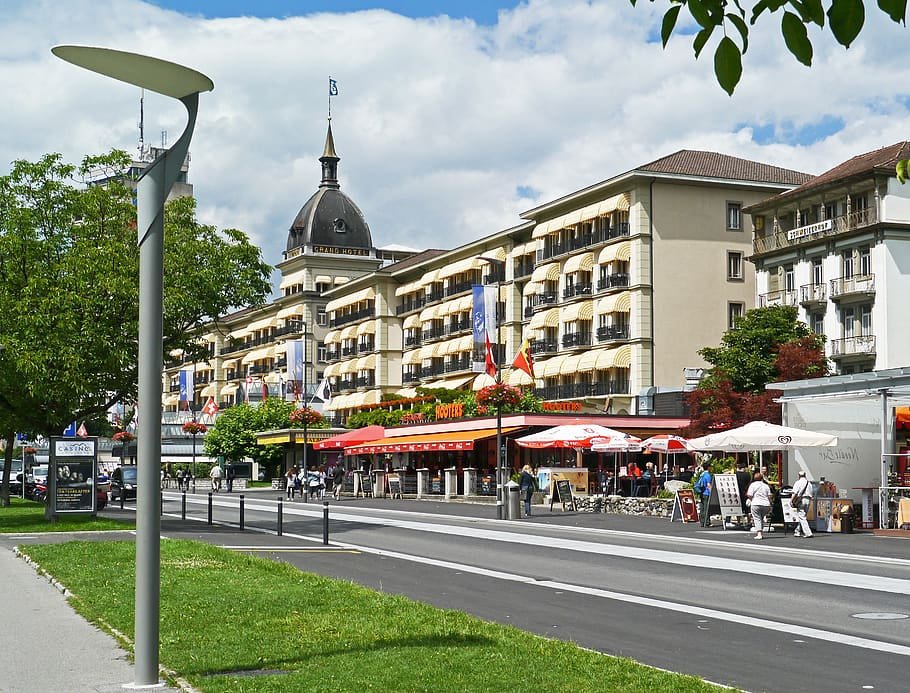

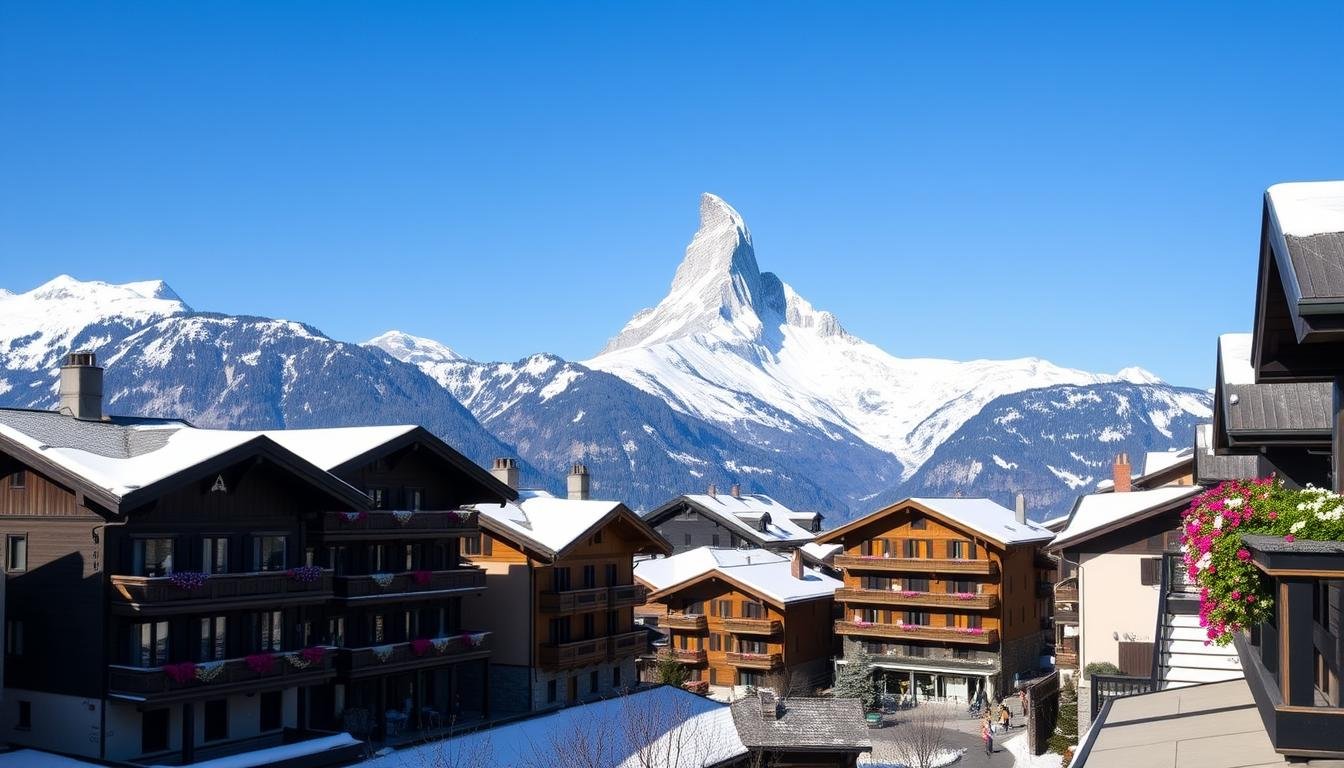

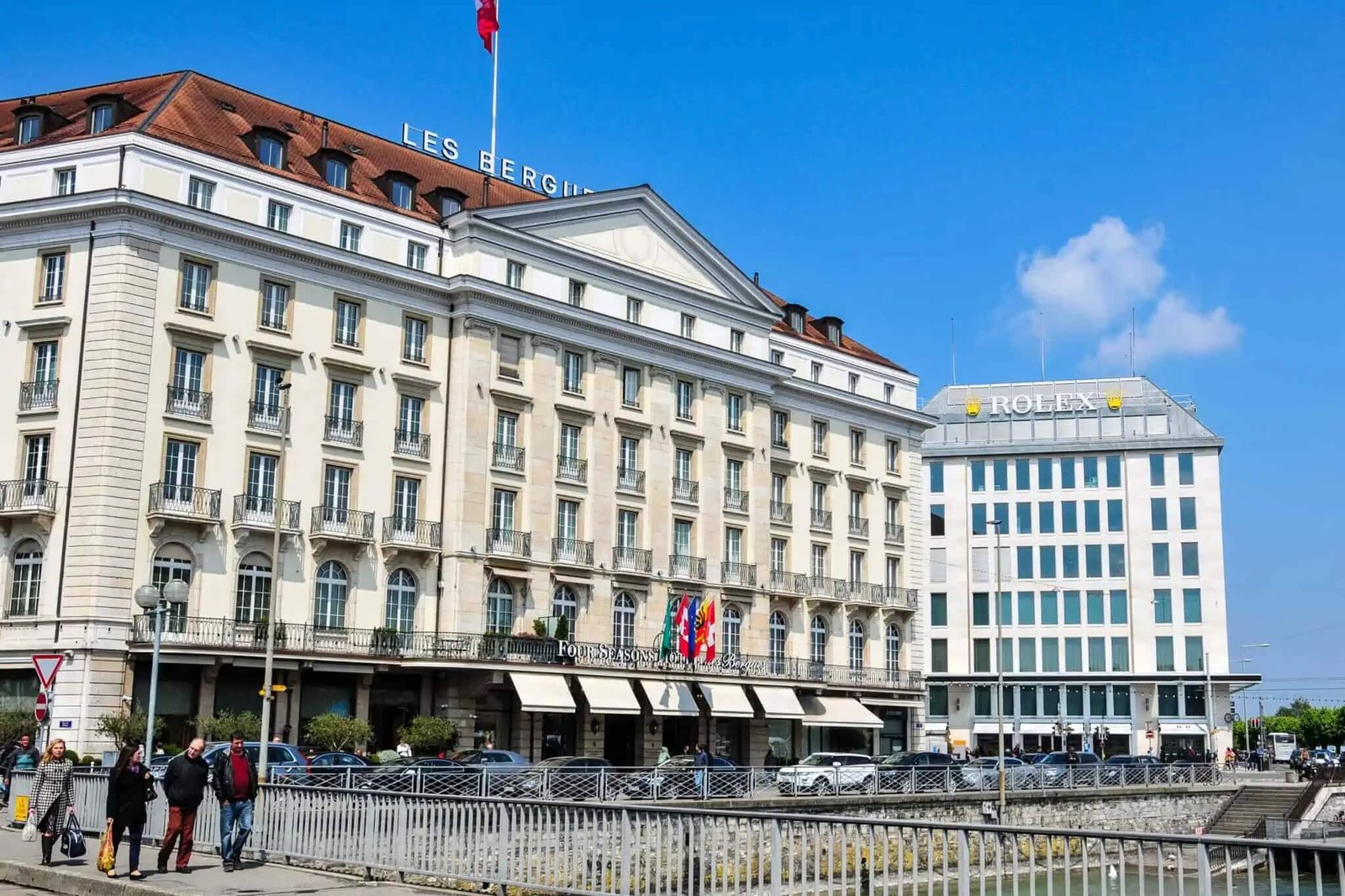
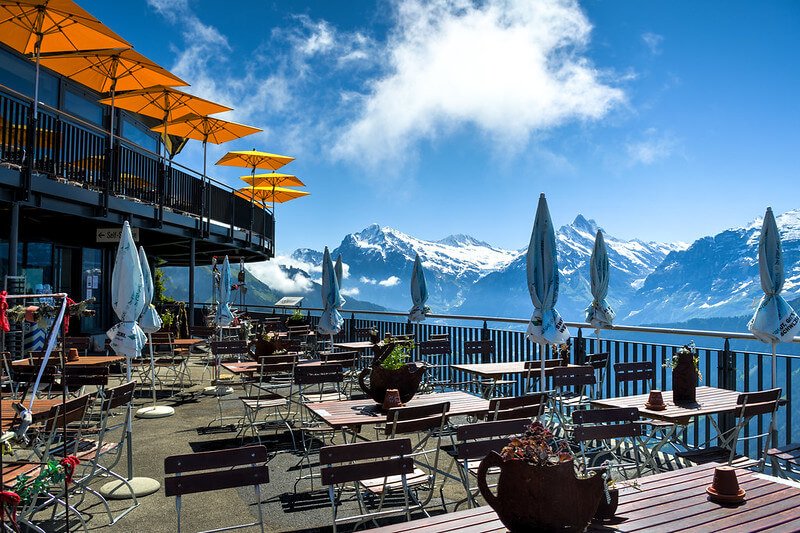

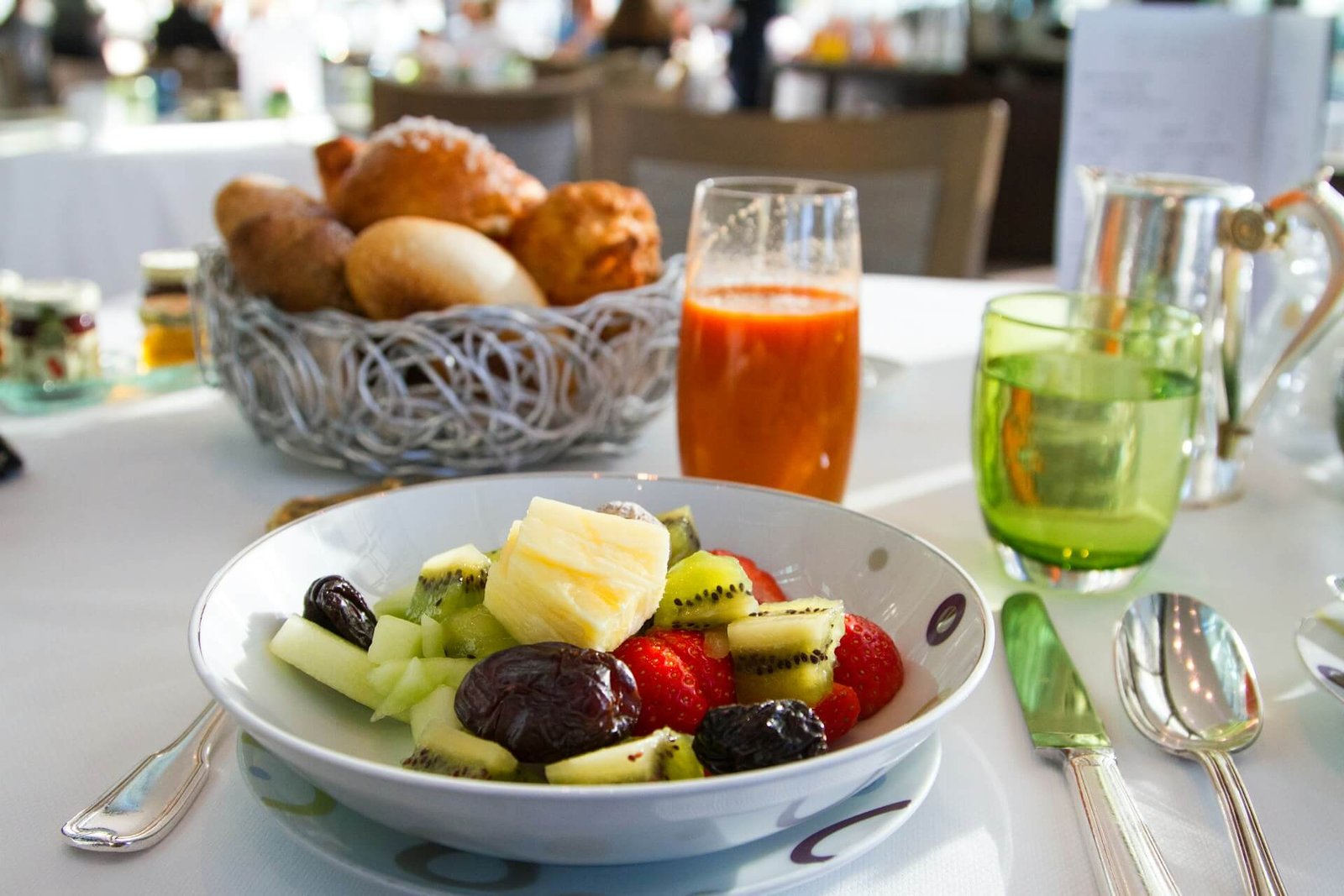


[…] first discovered the unique world of fast food in Switzerland during a trip to Zurich. I had expected the typical fast food experience but was […]
[…] this comprehensive guide, we will explore the best foods in Switzerland, from iconic dishes to hidden culinary gems. Along the way, I’ll share personal insights and tips […]